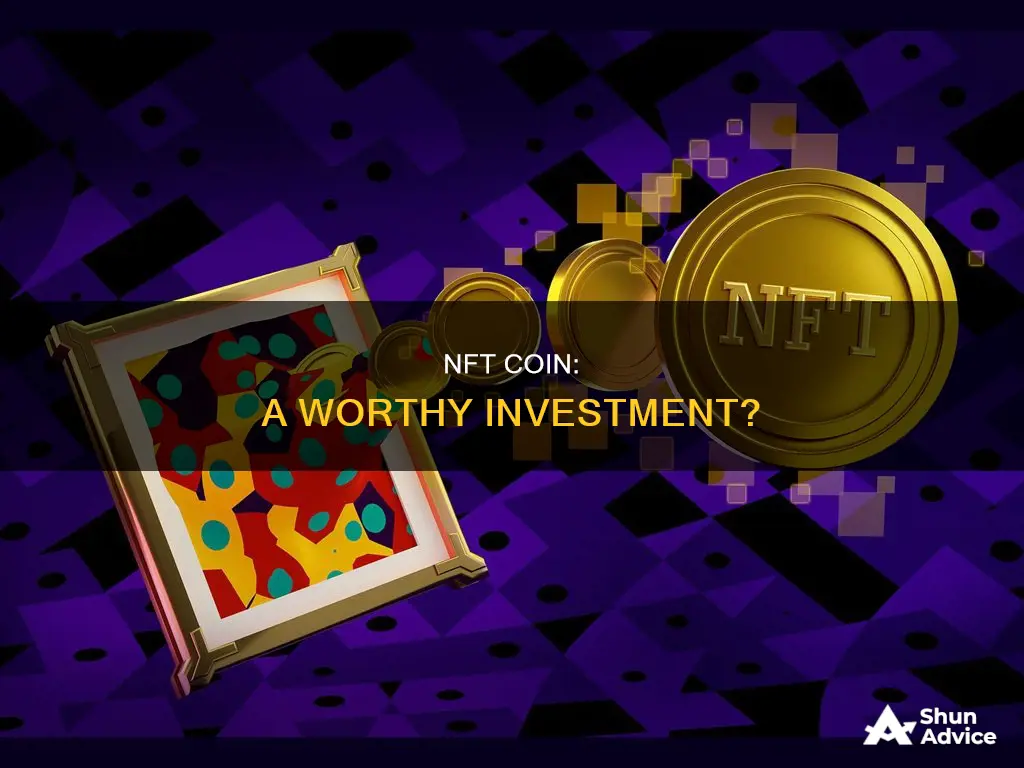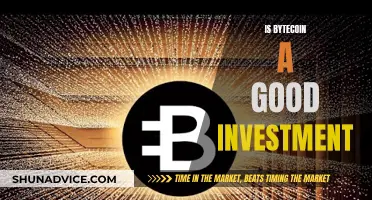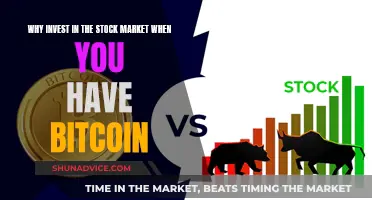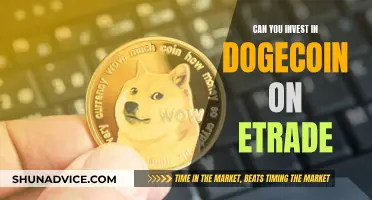
Non-fungible tokens, or NFTs, are digital assets that represent anything from art to music to videos. NFTs are built on blockchain technology, which is also used to verify cryptocurrencies like Bitcoin. However, unlike Bitcoin, NFTs represent ownership of a specific asset, such as a digital painting. NFTs can be bought and sold, but the market for them is still relatively new and immature.
The value of NFTs is highly speculative and dependent on demand. NFTs are also very risky because they are built on blockchain technology, which is backed by cryptocurrency. The value of NFTs can fluctuate due to the volatility of the cryptocurrency market.
Despite the risks, NFTs can be a rewarding investment alternative. They provide tokenized asset value, enhanced liquidity for investors, and expansion and growth possibilities, especially in the real estate industry. NFTs also give content creators complete ownership over their creations and bypass the need to transfer content ownership to publishing platforms.
Before investing in NFTs, it is essential to do your own research and understand the risks involved. NFTs are not regulated in many countries, and there is a possibility of losing all your investment. Due diligence and a well-rounded understanding of the NFT project are crucial for achieving the best probability of success.
| Characteristics | Values |
|---|---|
| Fungibility | Non-fungible |
| Use Cases | Digital art, music, videos, real-world assets, in-game items, virtual real estate |
| Market Value | Depends on demand and market conditions |
| Sales Figures | $25bn in 2021, $5bn in August 2021 |
| Sales Trends | Sales have slumped since their peak |
| Purchase Method | Bought and sold online using cryptocurrency |
| Purchase Risks | Copycat NFTs, fraudulent sites, hacking, regulatory uncertainty |
| Advantages | Uniqueness, proof of ownership, enhanced liquidity for investors, expansion possibilities |
| Disadvantages | Environmental impact, high energy usage, regulatory uncertainty |
What You'll Learn

NFT's regulatory uncertainty
The regulatory uncertainty around NFTs poses a significant obstacle in the way of mass adoption. The lack of clear, consistent, and globally applicable rules and regulations means that buyers and sellers do not have a standard set of guidelines to refer to when conducting transactions. This makes it difficult to assess and mitigate risks when buying or selling NFTs.
The regulatory environment for digital assets like NFTs is currently in flux, and forthcoming rules could change how the industry operates in the near future. This uncertainty has led to companies like GameStop deciding to wind down their NFT marketplaces.
The US Securities and Exchange Commission (SEC) has taken controversial enforcement actions against NFT issuers for "unregistered offerings of securities", adding further uncertainty to the regulatory environment. The SEC's broad interpretation of its jurisdiction has left the public questioning the extent of its reach.
The lack of regulatory clarity around NFTs also extends to their legal status. While they share similarities with stocks, NFTs have not been officially declared as securities, and they may ultimately be considered commodities. This ambiguity further complicates the regulatory landscape and contributes to the overall uncertainty surrounding NFTs as an investment option.
The regulatory uncertainty around NFTs is a critical factor that potential investors should consider when evaluating the risks and rewards of investing in this emerging market.
Uncirculated Coins: Smart Investment or Money Pit?
You may want to see also

NFT's speculative nature
The speculative nature of NFTs is a key aspect of their appeal and riskiness as an investment. NFTs are non-fungible tokens, meaning they are unique digital assets that cannot be replaced or exchanged with goods of the same kind. This is in contrast to fungible goods such as money or trade goods, which can be easily interchanged. The value of an NFT goes beyond its material worth and is subject to fluctuations like those of conventional artworks or collectibles.
The speculative nature of NFTs is evident in their potential for high returns on investment. NFTs have fetched large sums in digital auctions and sales, with some selling for millions of dollars. This has created a "gold rush" mood and a sense of community among investors, who believe in the potential of this new technology. The accessibility of these digital assets, with the ability to invest using a smartphone and an internet connection, has further fuelled the speculative nature of the market.
However, the speculative nature of NFTs also carries significant risks. The market for NFTs is highly volatile, with sales hitting a monthly record of nearly $5 billion in August 2021 before steeply declining in June 2022 along with the value of cryptocurrencies. The regulatory uncertainty around NFTs and the lack of clear intellectual property rights also pose challenges for investors. Additionally, the energy consumption and carbon footprint associated with NFT transactions have drawn criticism.
The speculative nature of NFTs can be compared to a pyramid or Ponzi scheme, where early adopters profit at the expense of later buyers. The NFT market has been described as being in an "ascending phase", with the potential for a subsequent "disappointment phase" as the hype settles. As such, NFTs are considered a highly speculative investment, and investors are advised to proceed with caution and conduct thorough research before entering the market.
Teslacoin: A Worthy Investment or Risky Business?
You may want to see also

NFT's collectability
NFTs, or non-fungible tokens, are unique digital assets that can represent anything from art to music to videos. They are often bought and sold online, usually with cryptocurrency, and are highly sought after as they are becoming a popular method of acquiring and trading artworks. NFTs can be used to prove ownership of a digital or real-world asset, which is especially valuable in the digital world where anything can be copied.
NFTs are created on a blockchain, which helps to identify ownership with a single account. They are indivisible and cannot be divided among different owners. They are also cryptographically verifiable, meaning that the origin and current owner of the asset in question can be determined in seconds. This helps to prove the authenticity of an NFT, and the blockchain technology also makes it harder to steal and flip NFTs than it is with physical art.
NFTs can be used for a variety of assets, including digital art, in-game items, digital identity credentials, and land titling. They can also be used for event tickets, helping to eliminate fraud and providing infinite possibilities for post-purchase collectability. NFTs can also be used for fan/customer engagement, allowing brands to deepen their engagement with customers and fans.
The value of NFTs is highly dependent on their specific use case. NFTs that are used to represent ownership of artwork or game collectibles can be good investment cases. However, the regulatory uncertainty around NFTs poses a significant obstacle to their mass adoption, and it is difficult to make a general statement about whether or not NFTs are good investments.
NFTs can also be collectibles, with categories including art, music, clips, sport, and games. Collectors can be anyone, from traders looking for short-term gains to crypto magnates who love collecting. NFTs as collectibles offer benefits such as independence, ease, and liquidity. For example, sports collectibles allow fans to connect with their idols directly, while game collectibles allow gamers to play and trade. NFTs have also helped unexposed artists connect with potential buyers and sell their works more easily.
SOS Coin: A Smart Investment Decision?
You may want to see also

NFT's scarcity
NFTs: Scarcity
Non-fungible tokens, or NFTs, are distinct pieces of digital media that are verifiably scarce and unique. They are created on the blockchain, with each NFT associated with a unique record. This makes it impossible to create counterfeit NFTs.
NFT creators can issue a limited number of NFTs, making supply scarce and thus increasing their value. NFTs are often described as “1x1” or “1x100”, listing their scarcity in relation to the number of identical NFTs released. Once released, that number cannot be changed and that set of assets is immutably verified to have originated from that creator at a certain point in time.
The blockchain is what gives NFTs their aura of authenticity, by giving them both history and presence. It also ensures continuity and tracks ownership. This is what differentiates an NFT from a JPEG or GIF.
The influx of attention and investment in the NFT space in the last year has proven that there is vast interest not just in digital art but specifically in the unique value proposition of digital scarcity and verifiable ownership.
Canada eCoin: A Smart Investment Move?
You may want to see also

NFT's environmental impact
The creation, sale, and purchase of NFTs require energy and hardware use, which can lead to pollution and electronic waste. The energy consumption and carbon footprint of NFTs depend on the blockchain they are built on and the consensus mechanism used.
Energy Consumption and Carbon Footprint
NFTs are generally built on the Ethereum blockchain or similar blockchains. The energy consumption of NFTs occurs during the minting, listing, sale/purchase, and storage of the token. Minting an NFT is a separate transaction on a blockchain, as is transferring ownership during a sale. All transactions use energy.
The Ethereum blockchain, which is used for almost everything from token exchanges to NFTs, smart contracts, and decentralized apps, is particularly energy-intensive. Until September 2022, Ethereum used a Proof-of-Work (PoW) consensus mechanism, which is incredibly energy-hungry. PoW requires miners to expend energy in a competition to solve cryptographic problems and validate transactions.
However, Ethereum transitioned to a Proof-of-Stake (PoS) consensus mechanism in September 2022, which significantly reduced its energy consumption and that of NFTs minted on its platform. PoS consumes less energy because it does not require miners to compete to solve cryptographic problems. Instead, it uses a system called staking, where validators stake their cryptocurrency on the network and are randomly chosen to verify transactions and propose new blocks.
Electronic Waste
If a blockchain relies on mining, like Bitcoin, the hardware used for mining can quickly become outdated and worn out due to continuous use. Upgrading and replacing faulty equipment creates tons of electronic waste (e-waste). E-waste contains hazardous materials such as lead, mercury, and cadmium, which can leach into the environment if improperly disposed of. Recycling e-waste lowers the energy consumption associated with NFTs by reducing the need to mine and process new raw materials.
Steps Towards Sustainability
Given the potential environmental impact of NFTs, there is a movement to develop more sustainable blockchain and NFT protocols. Artists, buyers, and sellers can choose to use NFT platforms and blockchains that use less energy, such as those with less energy-intensive consensus mechanisms or hotspots in areas that use renewable energy sources.
The Crypto Climate Accord, inspired by the Paris Climate Agreement, is an initiative for the crypto community focused on decarbonizing the cryptocurrency and blockchain industry. The Accord has set goals to transition all blockchains to renewable energy by 2030 and reduce their net carbon footprint to zero by 2040.
Additionally, blockchain developers and communities are working to find ways to lessen or eliminate the environmental impact of NFTs. Shifting from energy-intensive consensus mechanisms like PoW to more efficient ones like PoS can significantly reduce the environmental impact of NFTs.
Gordon Ramsay's Bitcoin Adventure: Has He Invested?
You may want to see also
Frequently asked questions
NFTs, or non-fungible tokens, are unique digital assets that are bought and sold online using cryptocurrency. They are often used to indicate ownership of a particular digital item, such as a piece of digital art. NFTs can be used to buy and sell digital artwork, but they can also represent real-world assets.
The Financial Conduct Authority (FCA) considers investing in NFTs to be high-risk. There is a risk of losing all the money invested due to factors such as cyber-attacks, financial crime, and firm failure. NFTs are also highly volatile, with their value fluctuating based on market demand.
NFTs have the potential to appreciate in value over time due to their perceived utility and recognition of ownership. They can also provide enhanced liquidity for investors, as tokenized assets can be leased out while still retaining ownership. Additionally, NFTs give content creators complete ownership over their creations, allowing them to bypass traditional publishing models and retain more of the profits.







